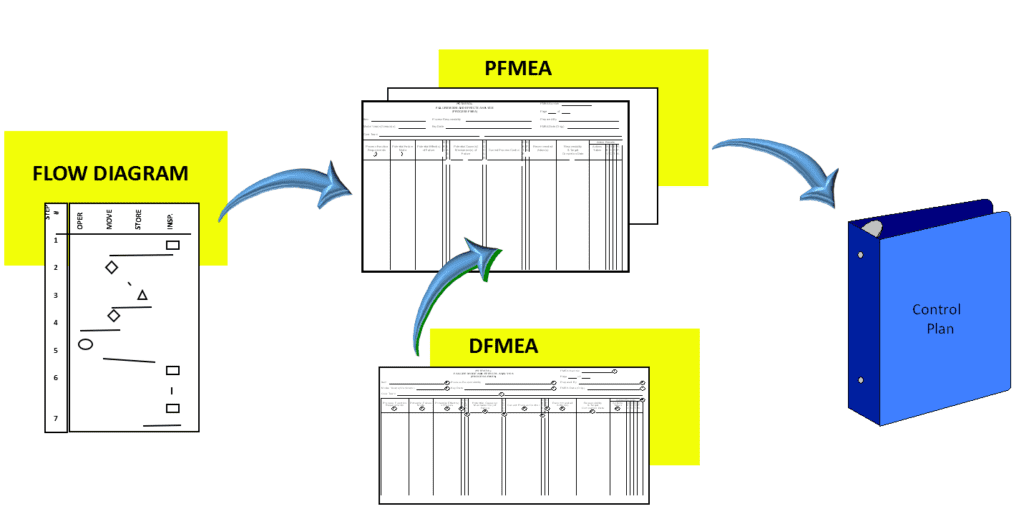Each organization starting cooperation with a client from the automotive industry must be aware that during the start-up phase its representative will plan a dedicated process audit in the production plant.
This situation also occurs when the current supplier delivers at new launches components with safety characteristics, or when the customer based on previous evaluation of his scoring concluded that verification should be applied directly at his plant during the phase preceding serial production. For this reason, it is worth preparing for such a client audit. It should also be added that readiness to start production is linked with many areas, including those not directly related to production. The main elements on which the company should focus are presented below.
0-km complaints review issued by the production plant and warranty returns analysis
The above approach applies if we’ve been cooperating with a particular client since earlier launches. In organizations, this area is usually dealt with by the person responsible for the customer’s quality, but in the case of comprehensive products you can meet with a separated structure.
Each customer before visiting the supplier has the opportunity to read the status of the complaint, so we should ensure that all actions related to temporary actions (ICA – Interim Contaiment Actions) and definitive actions (PCA – Permament Corrective Actions) are directly updated in the client’s database, e.g. in the form of an 8D report or Kaizen.
However, the situation is different in the case of warranty returns management where, in addition to the dedicated specific requirements, each customer specifies the appropriate requirements to be met regarding the relevant audit documents.
Requalification tests preparing for Client audit
The above issue is currently applied without exception to both current and new suppliers. This area requires additional attention not only because of individual customer requirements, but also because of the corresponding IATF requirement – 8.6.2. Dimensional control and functionality testing. It defines that specified tests, which should include project documentation, should be included in the Supplier Control Plan.
However, the frequency is already directly determined with the customer.
It is worth mentioning another key document, which is the Supplier Product Validation, because it specifies what tests are to be performed as part of the re-qualification. The standard frequency for the VW group is 3 years.
However, GM uses a completely different approach, which states that in the absence of agreement with the customer department regarding frequency, there are no guidelines in this respect. Of course, in this case, appropriate evidence from such an agreement should be provided during audit performed by Certification Body.
FMEA / Control Plan / Flowchart documentation review
Before client audit on production line starting, the visit normally is becoming from documentation review. The above three documents are closely related, as illustrated below. The input information for designing the production process is Flow Chart and Design FMEA.
 From the other hand, the input for the Control Plan is information contained in PFMEA relating to activities that have the effect of the occurrence problem reducing or increasing its detectability. Given the combination of these documents, we must remember the following common elements that must be included:
From the other hand, the input for the Control Plan is information contained in PFMEA relating to activities that have the effect of the occurrence problem reducing or increasing its detectability. Given the combination of these documents, we must remember the following common elements that must be included:
– numbering of individual operations (in all three documents)
– name of production operations (in all three documents)
– special characteristic symbol (obligatory in PFMEA and Control Plan)
– planned control including frequency and time period, which must be consistent in PFMEA and the Control Plan. In particular, this is important when appropriate measures are taken to eliminate the possibility of a problem occurring on the production line. Referring to the 8D methodology, we must remember that in step D7 the documentation update as part of preventive actions after the provided nonconformity.
In addition, each person who deals with customer service should be familiar with the additional requirements for these 3 documents. For example, Stellantis-FCA clarifies in a PPAP audit that the appropriate number of operators must be indicated in the Flow Chart document (requirement 5.4.)
Another example would be GM, which in the PCPA document includes the PFMEA update based on warranty data, so in practice the actions that were introduced after the analysis (requirement 56).
You can download an automatic, editable Excel form for free on the Free Quality Tools
Document name: Check List – 50 activities to be verified before the customer’s visit – Excel form


